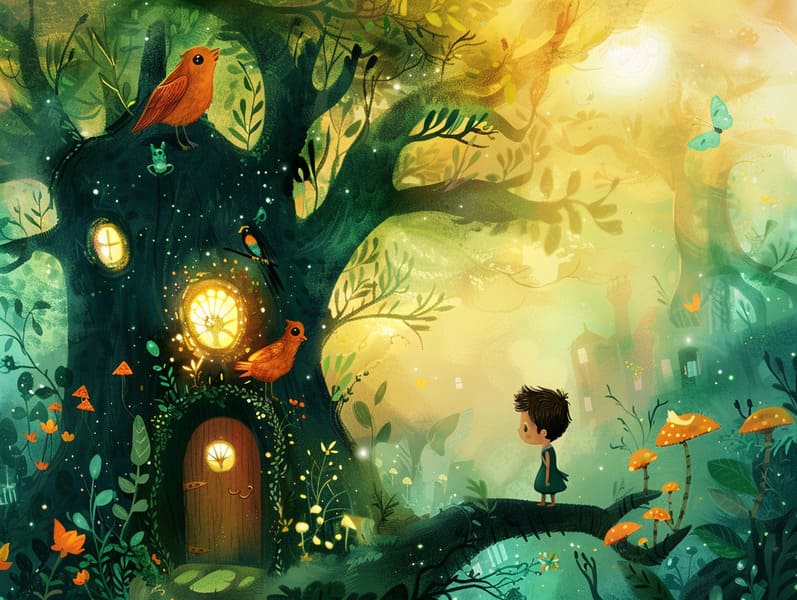The Beginning of Traditional Fairy Tales and Its Unfading Splendor.
The Beginning of Traditional Fairy Tales and Its Unfading Splendor.
Blog Article

Children's fairy tales have ancient roots. These narratives have been told from one generation to the next millennia before they were ever put on paper. They were born from a variety of civilizations, including European traditions. They were initially told among mature audiences, often carrying themes and messages related to the societal norms and beliefs of the time.
Jacob and Wilhelm Grimm, the two Grimm brothers, were among the first to compile and publish many of these beloved fairy tales. Their collection, "Grimm's Fairy Stories," included narratives like "The Little Glass Slipper," "Hansel and Gretel," and "Schneewittchen," which have since become staples in the world of famous fairy tales. Similarly, the Danish author's charming stories, such as "The Mermaid's Tale," and "The Story of the Ugly Duckling," have gained the love worldwide, establishing their place in the pantheon of famous fairy tales.
Despite their ancient origins, fairy tales remain as important as ever, especially as nighttime stories for kids. These delightful tales are now available in diverse formats, including gorgeously illustrated books, fantastical animations, and free fairy tales online.
Their lasting appeal can be credited to several magical reasons:
Crucial Morals: Timeless fairy tales often impart important moral lessons. Fairy tales like "The Tale of the Boy Who Cried Wolf" teach the value of truth, while "The Tortoise and the Hare" illustrate the benefits of perseverance and meekness. These tales offer kids clear distinctions between truth and falsehood, forming their moral compass in a subtle yet impactful way.
Compassion and Knowledge: Traditional fairy tales frequently showcase heroines facing challenges and problems, provoking young readers to understand with their struggles and celebrate their triumphs. For instance, "The Tale of Beauty and the Beast" highlights the importance of seeing inner beauty to acknowledge the true essence of a being, nurturing tenderness and awareness.
Cultural Appreciation: Many traditional fairy tales are deeply ingrained in the cultural contexts from which they blossomed. Exploring these stories can provide intriguing perspectives into different ways of life, enhancing a sense of global insight and discernment.
Imagination and Innovation: The fantasy-filled elements in old fairy tales—enchanted lands—foster children’s inventiveness. These tales move readers to fantasy realms, activating inventive dreams and a sense of magic that endures a lifetime.
Old fairy tales are not only delightful but also informative. They act as whimsical tools in building various mind and heart abilities in young ones. When traditional fairy tales are spoken out loud, they advance language skills by showing new terms and meanings and elaborate sentence structures. This practice also nurtures auditory skills and mindfulness, as the young stay focused, anticipating to see what happens next.
Furthermore, analyzing the themes and characters of old fairy tales can strengthen analytical skills and intellectual skills. Kids are guided to notice patterns, forecast, and make sense of cause and effect. These contemplations also ease children communicate their thoughts and feelings, adding to their emotional more info intelligence.
In today’s digital age, the prevalence of digital fairy tales has made these tales more accessible than ever. Websites and programs give ample collections of ancient fairy tales that can be read or listened to anytime, anywhere. Fairy tales read aloud are particularly sought after, sharing an entertaining method for little ones to savor these charming stories. Narrated books and read-to-me videos guide characters and settings to life, often supported by spellbinding background sounds and soundtracks that intensify the narrative experience.
The lasting appeal of ancient fairy tales lies in their ability to shift to new eras while maintaining their essential themes. Contemporary reimaginings of these stories often present more diverse figures and modern settings, making them relevant to today’s audience. However, the underlying themes of spirit, kindness, and equity remain unchanged, continuing to affect children of all ages.
Timeless fairy tales also offer a sense of security and homeliness. They render a structured narrative with a straightforward beginning, middle, and end, often finishing with the closure of conflicts and the triumph of honesty over deceit. This reliability can be consoling for children, providing a sense of stability in an always shifting world.
Timeless fairy tales continue to charm and inform new generations, maintaining their majesty and importance in modern society. As kids' bedtime tales, they put forth a perfect blend of delight and instruction, advancing moral values, empathy, and creativity. The abundance of digital fairy tales and the prevalence of fairy tales voiced make sure that these timeless tales remain reachable to new generations.
By continuing and communicating these fairy tales, we continue to value the rich tapestry of mythology and cultural heritage. Whether you are browsing a artistically illustrated book, viewing a electronic collection, or listening via an sound book, the spell of timeless fairy tales is always within reach. These narratives point out of the invariable ability of stories and its ability to hold us together across eras and regions.
No matter if you are viewing a vibrantly illustrated book, discovering a internet library, or playing an read-aloud book, the splendor of old fairy tales is always within reach.
These tales demonstrate of the enduring force of tales and its ability to join us across time and space, making a tie that charms and informs alike.